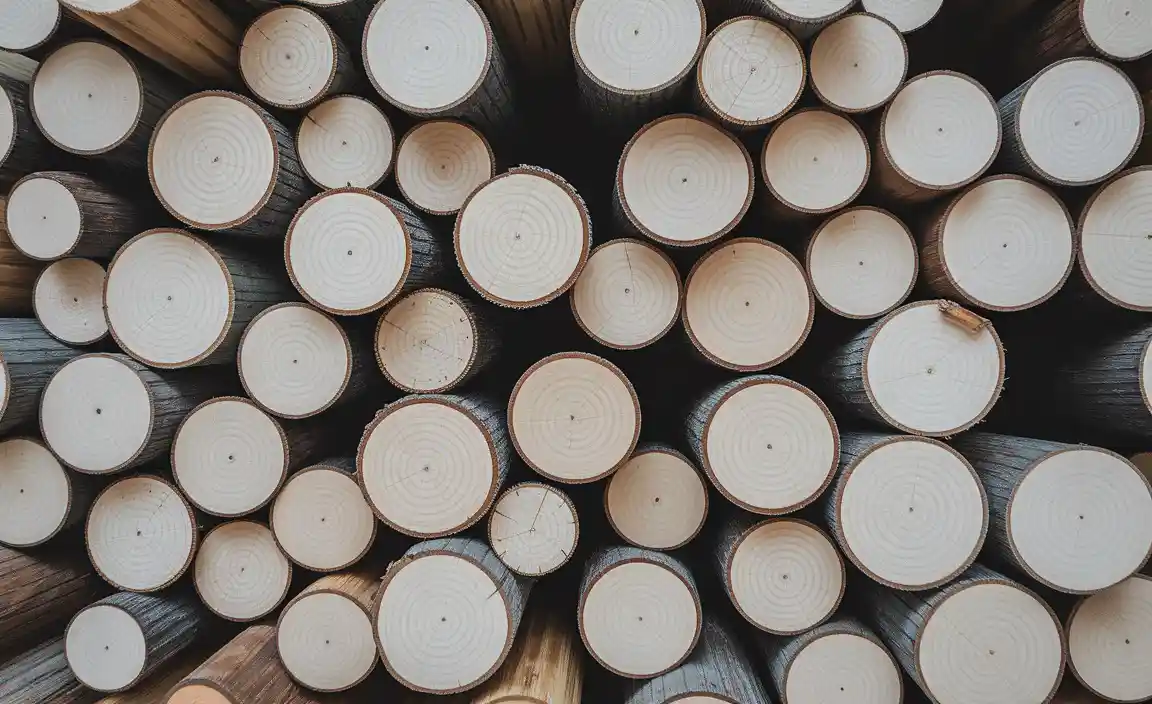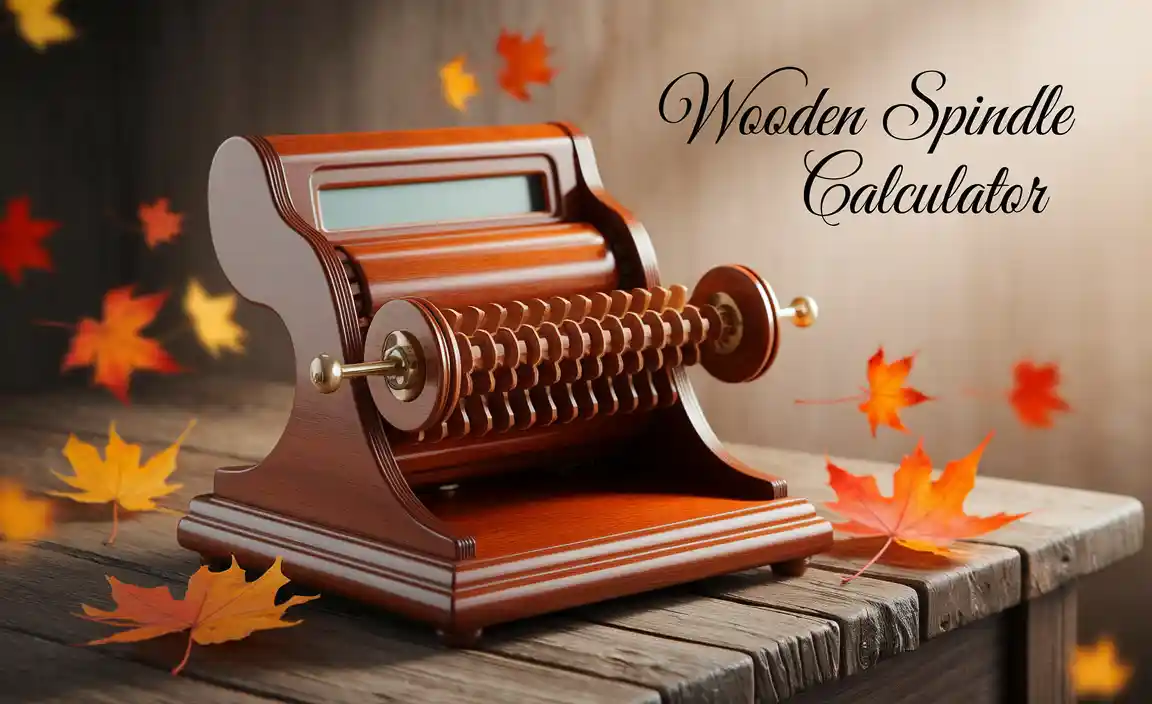Yes, you can use brad nails for baseboards, but with important considerations. Brad nails offer a quick and clean installation for lighter baseboards, especially when combined with wood glue. However, for heavier or wider profiles, sturdier nails like finish nails are often recommended for the best hold. This guide explores when and how to use brad nails effectively for your baseboard projects.
Table of Contents
Can You Use Brad Nails For Baseboards? An Essential Guide
Installing baseboards can significantly elevate the look of any room, giving it a finished and polished appearance. As you embark on this DIY project, you might find yourself staring at a nail gun and wondering, “Can I use these brad nails for my baseboards?” It’s a common question, and the answer isn’t a simple yes or no. Understanding the nuances of brad nails versus other fasteners is key to achieving a professional and lasting result without frustration.
Many homeowners want to tackle this project themselves, and using the right tools makes it so much easier. Brad nailers are popular for their ease of use and minimal damage to the wood. But are they strong enough for baseboards? We’ll break down everything you need to know, from nail size to technique. Stick around, and by the end of this guide, you’ll be confident in choosing the right nails and using them for a flawless baseboard installation.
Understanding Brad Nails vs. Finish Nails
Before we dive into using brad nails for baseboards, it’s essential to understand what they are and how they differ from other common fasteners like finish nails. This distinction is crucial for selecting the right tool and ensuring your baseboards stay put for years to come.
What Are Brad Nails?
Brad nails are thin, small-headed nails that are driven into wood using a brad nailer. They are characterized by their minimal diameter and a very small head, often referred to as a “pinhead.” This small head is designed to be less noticeable, making them ideal for applications where aesthetics are important and minimal damage to the wood surface is desired.
- Diameter: Typically range from around 18 gauge (thinner) to 16 gauge (thicker).
- Head Size: The head is very small, almost like a pinprick, making it easy to conceal.
- Application: Best suited for delicate trim work, attaching small moldings, and projects where visibility of the fastener is a concern.
- Holding Power: Due to their small diameter and minimal head, they offer less holding power compared to larger nails.
What Are Finish Nails?
Finish nails are the traditional choice for installing baseboards and other trim work. They are thicker than brad nails and have a larger, but still relatively small, head. This slightly larger head provides better holding power, making them more robust for securing trim against walls.
- Diameter: Generally range from 15 gauge to 14 gauge, making them thicker and stronger than brad nails.
- Head Size: The head is larger than a brad nail head but still small enough to be set flush or slightly below the wood surface and filled easily with wood filler or putty.
- Application: The go-to for installing baseboards, crown molding, window and door casings, and other substantial trim pieces.
- Holding Power: Offer significantly more shear strength and holding power than brad nails due to their thicker shank and larger head.
Key Differences Summarized
The primary differences between brad and finish nails come down to their physical dimensions and, consequently, their holding power and suitability for different tasks. While brad nails are about speed and minimal visual impact, finish nails prioritize strength and durability for trim applications.
| Feature | Brad Nails | Finish Nails |
|---|---|---|
| Gauge (Thickness) | 18-16 gauge (thinner) | 15-14 gauge (thicker) |
| Head Size | Very small (pinhead) | Small, slightly larger than brad nail head |
| Holding Power | Lower | Higher |
| Ideal For | Light trim, delicate moldings, projects where minimal damage is key | Baseboards, door/window casings, crown molding, substantial trim |
| Nail Gun Type | Brad nailer | Finish nailer |
When Can You Use Brad Nails for Baseboards?
So, can you actually use those brad nails for your baseboards? The answer is a qualified “yes,” but it depends heavily on a few factors. If you’re determined to use brad nails, here’s when it might be a viable option:
1. Lightweight Baseboard Materials
If you’re working with lightweight baseboards, such as those made from hollow vinyl, thin MDF, or very soft woods, brad nails can often provide sufficient holding power. These materials don’t carry a lot of weight, and the trim’s primary function is decorative rather than structural.
For these lighter options, 16-gauge brad nails are generally the best bet, as they offer a bit more strength than 18-gauge. The key is to ensure the nails are long enough to penetrate past the baseboard and into the wall studs or the solid backing material.
2. With Wood Glue
This is perhaps the most critical factor when using brad nails for baseboards. Pairing brad nails with a strong wood glue significantly increases their holding power. The glue creates a permanent bond between the baseboard and the wall, while the nails act as temporary clamps, holding everything in place until the glue fully cures.
Apply a generous bead of quality wood glue to the back of the baseboard where it will contact the wall and studs. Then, shoot the brad nails through the baseboard and into the studs. This combination can make brad nails surprisingly effective, even for slightly heavier trim.
3. For Straight, Flat Walls
If your walls are perfectly straight and plumb, and your baseboards are also perfectly straight, you’ll have excellent contact. This good surface-to-surface contact allows the glue to do its job effectively, and the nails won’t be subjected to undue stress from trying to conform the trim to uneven surfaces.
However, if your walls have curves or your floor is uneven, finish nails will be much more forgiving and can help pull the baseboard into place without splitting the wood.
4. In Combination with Other Fasteners
Some DIYers opt for a hybrid approach. They might use brad nails for less critical areas or initial tacking, and then follow up with longer finish nails, particularly into studs, for maximum security. Alternatively, they might use finish nails for the bulk of the installation and brad nails for very delicate or intricate profiles within the baseboard design.
When You Should Avoid Brad Nails for Baseboards
While brad nails can work in specific situations, there are many scenarios where they are simply not the best choice. Using the wrong fastener can lead to sagging baseboards, popped nails, and a lot of frustration. Here’s when you should definitely opt for finish nails:
1. Heavy or Wide Baseboards
If you’re installing solid wood baseboards, especially those with a wider profile (e.g., 4-inch or taller) or a significant thickness, brad nails will likely not provide enough holding power. These heavier moldings require the stronger shank and larger head of finish nails to keep them securely attached to the wall. Insufficient support can lead to the baseboard bowing away from the wall over time.
2. Uneven or Out-of-Plumb Walls
Most homes have walls that aren’t perfectly straight. When installing baseboards on slightly uneven walls, you often need nails that can help pull the trim into place and hold it there. The larger head of a finish nail provides the necessary grip and clamping force to bridge small gaps and keep the baseboard flush against the wall. Brad nails, with their tiny heads, can easily pull through the wood or fail to provide adequate pressure in these situations.
3. Areas Requiring More Strength
Think about areas that experience more wear and tear or are prone to bumps. High-traffic hallways, kitchens, or entryways might benefit from the extra security of finish nails. You don’t want your baseboards to come loose if someone accidentally kicks them or a piece of furniture bumps into them.
4. Where Long-Term Durability is Paramount
If you’re looking for a truly robust and long-lasting installation that will withstand the test of time and minor stresses, finish nails are the superior choice. They provide a more secure mechanical connection that is less reliant on the adhesive solely holding the weight and stress.
5. If You Don’t Have Wood Glue
As mentioned before, wood glue is almost essential when relying on brad nails for baseboards. If you’re not planning on using glue, or don’t have it on hand, skip the brad nails and go straight for finish nails. The nail alone won’t provide the sustained holding power needed.
Choosing the Right Brad Nailer and Nails for Baseboards
If you’ve decided that brad nails are the right choice for your specific baseboard project, selecting the correct nailer and nails is crucial for success. Here’s what to look for:
Nailer Selection
For baseboards, you’ll typically be looking at either an 18-gauge or 16-gauge brad nailer. 16-gauge nailers are generally preferred for baseboards because they use slightly thicker and longer nails, offering better holding power. 18-gauge nailers are excellent for very delicate trim, but might be underwhelming for baseboards unless they are exceptionally light and glued.
- 16-Gauge Brad Nailer: Your best bet for most baseboard applications where brad nails are being considered. They drive nails with a bit more force and have a larger head than 18-gauge nails.
- 18-Gauge Brad Nailer: Best for very light, thin, or delicate trim. May be insufficient for standard baseboards unless combined heavily with glue.
Nail Length
The length of your brad nails is critical. You need nails long enough to pass through the baseboard material and securely embed into the wall studs. A general rule of thumb is to have at least 1 inch (2.5 cm) of the nail penetrate into the stud.
For typical 1/2-inch thick baseboards, you’d want nails that are at least 1 1/2 inches long. For thicker baseboards (e.g., 3/4 inch), you’d need nails around 2 inches long. Always measure your baseboard thickness and factor in wall material to determine the optimal length. Remember, finding the studs is key for a secure installation.
Gauge Considerations Again
As reiterated, the gauge matters. 16-gauge brad nails offer a balance between being fine enough to minimize visible holes and strong enough to hold lightweight trim. If you’re trying to make 18-gauge brad nails work, be prepared for the possibility of them not holding as well, especially over time.
Step-by-Step: Installing Baseboards with Brad Nails (The Right Way)
If you’ve assessed your project and decided brad nails are suitable, here’s how to use them effectively. Remember, this method is best for lighter baseboards and relies on wood glue for added strength.
Step 1: Gather Your Tools and Materials
Before you begin, ensure you have everything you need:
- Baseboard material
- Brad nailer (preferably 16-gauge)
- Brad nails (correct gauge and length)
- Air compressor (if using pneumatic nailer)
- Measuring tape
- Pencil
- Miter saw (for cutting angles)
- Wood glue (high-quality)
- Stud finder
- Safety glasses
- Ear protection
- Wood filler or putty
- Caulk gun and paintable caulk
- Hammer or putty knife (for setting nail heads if needed)
Step 2: Prepare the Baseboards
Measure and cut your baseboards to size using a miter saw. Make sure to cut precise angles for corners, both inside and outside. Pre-drilling pilot holes is generally not necessary with brad nails, but always consider it if you are working with very hard wood to prevent splitting.
Step 3: Locate Wall Studs
Use a stud finder to locate all the wall studs behind where you will be installing the baseboards. Mark the center of each stud with a pencil. Knowing exactly where to drive your nails for maximum support is crucial for a secure installation. Aim to place at least one nail into a stud for every 16-24 inches of baseboard.
According to the U.S. Department of Housing and Urban Development (HUD), proper framing and attachment methods are fundamental to building safety and integrity. While this document is broader, the principle of securely fastening structural and decorative elements to studs applies.
Step 4: Apply Wood Glue
Apply a consistent bead of high-quality wood glue to the back of the baseboard. Ensure good coverage along the top edge, bottom edge, and any areas that will meet the wall studs. Don’t apply so much that it oozes out excessively, but ensure it’s thorough.
Step 5: Position and Nail the Baseboard
Carefully position the baseboard against the wall, ensuring it’s level and flush where possible. Once in place, load your brad nailer with the appropriate nails. Starting at one end, drive brad nails through the baseboard and into the wall studs you marked. Space your nails about 6-8 inches apart, ensuring you hit studs for the most critical points.
Important Tip: Hold the nailer firmly against the baseboard and wall. Press the tip of the nailer to the wood surface before firing to ensure the nail is driven straight and flush. If the nail doesn’t fully sink, you might need to adjust your nailer’s depth setting or use a hammer to gently tap the nail head the rest of the way in, being careful not to damage the wood.
Step 6: Install Subsequent Pieces
Continue working your way around the room, cutting and fitting each piece. Pay close attention to corner joints and seams, ensuring tight fits. For butt joints (where two pieces of baseboard meet end-to-end), try to stagger them so they don’t land on the same stud, and ensure both pieces are well-glued and nailed.
Step 7: Clean Up and Finish
Once all baseboards are installed and the glue has had a chance to set (check glue manufacturer’s instructions for drying times), you can address the nail heads. If the nail heads aren’t perfectly flush, use a nail set or hammer to gently tap them slightly below the surface of the wood.
Fill any nail holes, gaps, and joints with wood filler or putty. Once the filler is dry, sand it smooth. Finally, apply a bead of paintable caulk along the top edge of the baseboard where it meets the wall and along any seams or joints to create a seamless finish.
Pros and Cons of Using Brad Nails for Baseboards
Like any tool or technique, using brad nails for baseboards comes with its own set of advantages and disadvantages. Weighing these can help you make the best decision for your project.
Pros:
- Minimal Damage: The small size of brad nails and their tiny heads result in less visible holes, leading to a cleaner appearance and less filling required.
- Speed and Efficiency: A brad nailer allows for quick fastening, speeding up the installation process, especially on long runs of trim.
- Ease of Use: Brad nailers are generally lightweight and easy to maneuver, making them beginner-friendly.
- Less Wood Splitting: Their thinness makes them less likely to split delicate or thin trim materials compared to thicker nails.
- Good for Lightweight Materials: Ideal for hollow vinyl, certain MDF, or lightweight composite baseboards.
Cons:
- Limited Holding Power: Their biggest drawback is their insufficient holding power for heavier or wider baseboards, potentially leading to sagging over time.
- Reliance on Glue: You often need to heavily rely on wood glue to compensate for their lack of mechanical strength.
- Not Ideal for Uneven Walls: They struggle to pull trim tight against walls with imperfections.
- Potential for Pull-Through: On softer woods or with too much force, the small head can pull through the baseboard material.
- Not Suitable for All Wood Types: Solid hardwoods, especially wider profiles, require stronger fasteners.
When to Consider a Finish Nailer Instead
For many baseboard installations, a finish nailer is



